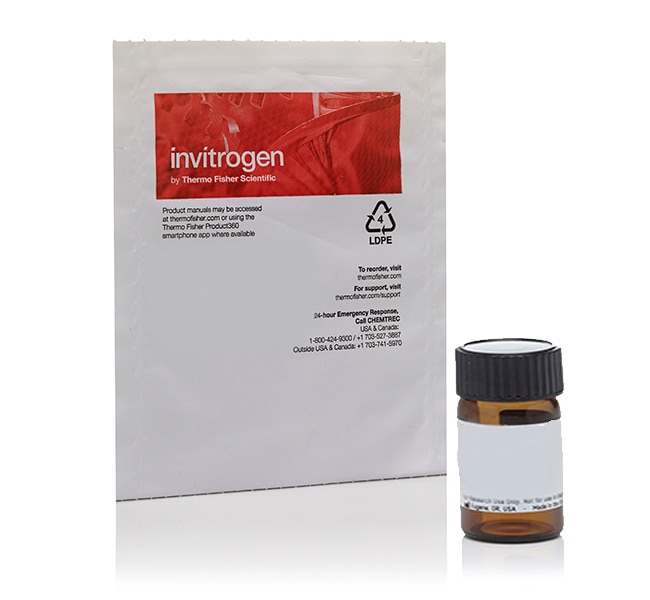Search Thermo Fisher Scientific

Certificates
SDS
Citations & References (159)
Invitrogen™
Tetramethylrhodamine, Ethyl Ester, Perchlorate (TMRE)
Tetramethylrhodamine, ethyl ester (TMRE) is a cell-permeant, cationic, red-orange fluorescent dye that is readily sequestered by active mitochondria.Dissolve the dyeRead more
 Promotion
PromotionPromo code:RIRP25
Save on Imaging Essentials to Create Your Next Masterpiece
14% off your purchase of $499 or more on Invitrogen cell stains and mounting products Learn More
| Catalog Number | Quantity |
|---|---|
T669 | 25 mg |
Catalog number T669
Price (CNY)
2,559.00
Online Exclusive
Ends: 31-Dec-2025
3,467.00Save 908.00 (26%)
25 mg
In stock
Quantity:
25 mg
Price (CNY)
2,559.00
Online Exclusive
Ends: 31-Dec-2025
3,467.00Save 908.00 (26%)
25 mg
Tetramethylrhodamine, ethyl ester (TMRE) is a cell-permeant, cationic, red-orange fluorescent dye that is readily sequestered by active mitochondria.
Dissolve the dye in high-quality anhydrous DMSO or ethanol to prepare stock concentration at 1 to 10 mM.
Visualize staining your cell without wasting your reagents, antibodies, or time with our new Stain-iT Cell Staining Simulator.
For Research Use Only. Not for use in diagnostic procedures.
Specifications
Detection MethodFluorescence
Excitation/Emission549/574 nm
Molecular Weight (g/mol)514.96
Quantity25 mg
Shipping ConditionRoom Temperature
Sub Cellular LocalizationMitochondria
ColorRed-Orange
For Use With (Equipment)Fluorescence Microscope
Product TypeTMRE
Unit Size25 mg
Contents & Storage
Store in freezer (-5°C to -30°C) and protect from light.
Have questions about this product? Ask our AI assisted search.
This is an AI-powered search and may not always get things right. You can help us make it better with a thumbs up or down on individual answers or by selecting the “Give feedback" button. Your search history and customer login information may be retained by Thermo Fisher and processed in accordance with our
Privacy Notice.
Frequently asked questions (FAQs)
Figures

Chemical Structure

Detection of apoptosis in SK-N-MC neuroblastoma cells.
Customers who viewed this item also viewed
Documents & Downloads
Certificates
Search by lot number or partial lot number
Lot #Certificate TypeDateCatalog Number(s)
3135775Certificate of AnalysisApr 14, 2025T669
2978503Certificate of AnalysisSep 30, 2024T669
2897784Certificate of AnalysisApr 23, 2024T669
2765694Certificate of AnalysisOct 19, 2023T669
2685408Certificate of AnalysisJun 20, 2023T669
5 results displayed, search above for a specific certificate
Safety Data Sheets
SDS
Citations & References (159)
Search citations by name, author, journal title or abstract text
Citations & References
Abstract
A hyperfused mitochondrial state achieved at G1-S regulates cyclin E buildup and entry into S phase.
Journal:Proc Natl Acad Sci U S A
PubMed ID:19617534
Mitochondria undergo fission-fusion events that render these organelles highly dynamic in cells. We report a relationship between mitochondrial form and cell cycle control at the G(1)-S boundary. Mitochondria convert from isolated, fragmented elements into a hyperfused, giant network at G(1)-S transition. The network is electrically continuous and has greater ATP
Antiapoptotic effect of nicorandil mediated by mitochondrial atp-sensitive potassium channels in cultured cardiac myocytes.
Journal:J Am Coll Cardiol
PubMed ID:12204514
OBJECTIVES: We examined whether nicorandil, a clinically useful drug for the treatment of ischemic syndromes, inhibits myocardial apoptosis. BACKGROUND: Nicorandil has been reported to have a cardioprotective action through activation of mitochondrial ATP-sensitive potassium (mitoK(ATP)) channels. Based on our recent observation that mitoK(ATP) channel activation has a remarkable antiapoptotic effect
Synaptic mitochondria are more susceptible to Ca2+overload than nonsynaptic mitochondria.
Journal:J Biol Chem
PubMed ID:16517608
'Mitochondria in nerve terminals are subjected to extensive Ca2+ fluxes and high energy demands, but the extent to which the synaptic mitochondria buffer Ca2+ is unclear. In this study, we identified a difference in the Ca2+ clearance ability of nonsynaptic versus synaptic mitochondrial populations enriched from rat cerebral cortex. Mitochondria
Age-related macular degeneration. The lipofusion component N-retinyl-N-retinylidene ethanolamine detaches proapoptotic proteins from mitochondria and induces apoptosis in mammalian retinal pigment epithelial cells.
Journal:J Biol Chem
PubMed ID:11006290
'10-20% of individuals over the age of 65 suffer from age-related macular degeneration (AMD), the leading cause of severe visual impairment in humans living in developed countries. The pathogenesis of this complex disease is poorly understood, and no efficient therapy or prevention exists to date. A precondition for AMD appears
VDAC-dependent permeabilization of the outer mitochondrial membrane by superoxide induces rapid and massive cytochrome c release.
Journal:J Cell Biol
PubMed ID:11739410
'Enhanced formation of reactive oxygen species (ROS), superoxide (O2*-), and hydrogen peroxide (H2O2) may result in either apoptosis or other forms of cell death. Here, we studied the mechanisms underlying activation of the apoptotic machinery by ROS. Exposure of permeabilized HepG2 cells to O2*- elicited rapid and massive cytochrome c
159 total citations
